Two farmers Ramakishan and Gurucharan Singh cultivate only three varieties of rice namely Basmati, Permal and Naura. The sale (in rupees) of these varieties of rice by both the farmers in the month of September and October are given by the following matrices A and B
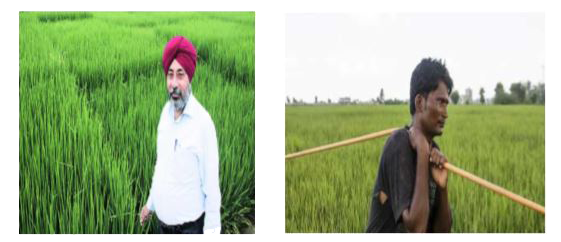
What is the value of ?A23?
10000
20000
30000
40000
The correct Answer is:A
Step by step video & image solution for Two farmers Ramakishan and Gurucharan Singh cultivate only three varieties of rice namely Basmati, Permal and Naura. The sale (in rupees) of these varieties of rice by both the farmers in the month of September and October are given by the following matrices A and B What is the value of ?A_(23)? by Maths experts to help you in doubts & scoring excellent marks in Class 12 exams.
Topper's Solved these Questions
- BOOK - CBSE MODEL PAPERCHAPTER - QUESTION BANK 2021EXERCISE - QUESTIONS9videos
QUESTION BANK 2021
- BOOK - CBSE MODEL PAPERCHAPTER - Additional Practice QuestionsEXERCISE - Question47videos
Additional Practice Questions
- BOOK - CBSE MODEL PAPERCHAPTER - SAMPLE QUESTION PAPER ( MATHEMATICS )EXERCISE - QUESTION60videos
SAMPLE QUESTION PAPER ( MATHEMATICS )
Similar Questions
Two farmers Ramakishan and Gurucharan Singh cultivate only three varieties of rice namely Basmati, Permal and Naura. The sale (in rupees) of these varieties of rice by both the farmers in the month of September and October are given by the following matrices A and B
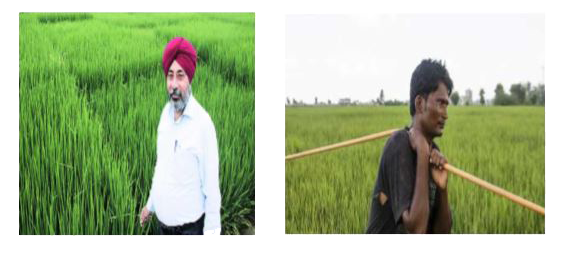
If Ramkishan receives 2% profit on gross sales, compute his profit for each variety sold in October.View SolutionTwo farmers Ramakishan and Gurucharan Singh cultivate only three varieties of rice namely Basmati, Permal and Naura. The sale (in rupees) of these varieties of rice by both the farmers in the month of September and October are given by the following matrices A and B
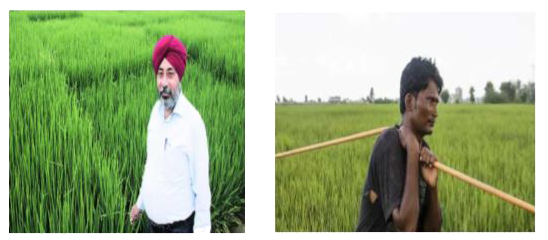
The total sales in September and October for each farmer in each variety can be represented as _______..View Solution
Knowledge Check
- Question 1 - Select One
Read the following text and answer the following questions on the basis of the same :
Two farmers Ramakishan and Gurucharan Singh cultivate only three varieties of rice namely Basmati, Permal and Naura. The sale (in Rs.) of these varieties of rice by both the farmers in the month of September and October are given by the following matrices A and B
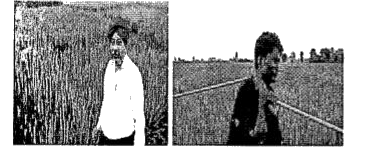
September sales(in Rupees)
A=[10,00020,0030,00050,00030,00010,000]RamakrishanGurcharan
October sales (in Rupees )
B=[5,00010,0006,00020,00010,00010,000]Ramakrishan Gurcharan
The total sales in September and October for each farmer in each variety can be represented as __________AA + BBA - BCA>BDA<B - Question 2 - Select One
Read the following text and answer the following questions on the basis of the same :
Two farmers Ramakishan and Gurucharan Singh cultivate only three varieties of rice namely Basmati, Permal and Naura. The sale (in Rs.) of these varieties of rice by both the farmers in the month of September and October are given by the following matrices A and B
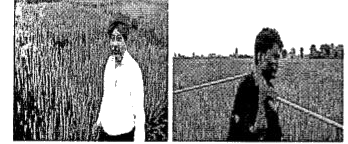
September sales(in Rupees)
A=[10,00020,0030,00050,00030,00010,000]RamakrishanGurcharan
October sales (in Rupees )
B=[5,00010,0006,00020,00010,00010,000]Ramakrishan Gurcharan
What is the value of A23 ?A10000B20000C30000D40000 - Question 3 - Select One
Read the following text and answer the following questions on the basis of the same :
Two farmers Ramakishan and Gurucharan Singh cultivate only three varieties of rice namely Basmati, Permal and Naura. The sale (in Rs.) of these varieties of rice by both the farmers in the month of September and October are given by the following matrices A and B
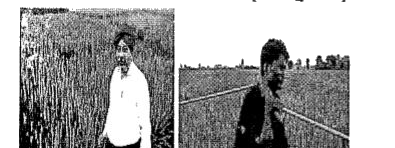
September sales(in Rupees)
A=[10,00020,0030,00050,00030,00010,000]RamakrishanGurcharan
October sales (in Rupees )
B=[5,00010,0006,00020,00010,00010,000]Ramakrishan Gurcharan
The decrease in sales from September to October is given by _______AA + BBA - BCA>BDA<B
Two farmers Ramakishan and Gurucharan Singh cultivate only three varieties of rice namely Basmati, Permal and Naura. The sale (in rupees) of these varieties of rice by both the farmers in the month of September and October are given by the following matrices A and B
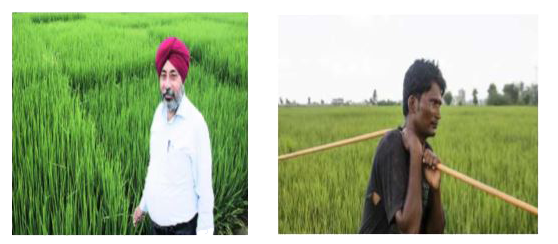
The decrease in sales from September to October is given by _______ .View SolutionTwo farmers Ramkishan and Gurcharan Singh cultivates only three varieties of rice namely Basmati, Permal and Naura. The sale (in Rupees) of these varieties of rice by both the farmers in the month of September and October are given by the following matrices A and B.(i) Find the combined sales in September and October for each farmer in each variety.(ii) Find the decrease in sales from September to October.(iii) if both farmers receive 2% profit on gross sales, compute the profit for each farmer and for each variety sold in October.
View SolutionTwo farmers Ramakishan and Gurucharan Singh cultivate only three varieties of rice namely Basmati, Permal and Naura. The sale (in rupees) of these varieties of rice by both the farmers in the month of September and October are given by the following matrices A and B

If Gurucharan receives 2% profit on gross sales, compute his profit for each variety sold in September.View SolutionBelow in each question are given two statements I and II . these statements may be either independent causes or may be effects of independent causes or a common cause. One of these statements may be the effect of the other statement Read both the statement and decide which of the following answer choice correctly depicts the following answer choice correctly depicts the relationship between these two statements
Make answer (a) If statement I is the cause and statement II is its effect.
Make answer (b) if statement II is the cause and statement I is its effect.
Make answer (c) If both the statement I and II are independent cause
Make answer (d) If both the statement I and II are effects of independent causes.
Mark answer (e) If both the statement I and II are effects of some common cause.
I. Frequent floods in the area changed the nutritional content of the soil.
II. Farmers in the area switched over to cultivating rice instead of wheat.View SolutionRead the following passage and answer the questions given after it.
The stark observation made in the Economic Survey of 2015-16 that “Indian agriculture, is in a way, a victim of its own past success – especially the green revolution”, shows the dark reality of the agriculture sector at present and the havoc that has been wreaked by the green revolution.
The green revolution, which is often characterised by the introduction of high-yielding variety of seeds and fertilisers, undoubtedly increased the productivity of land considerably. But the growth in the productivity has been stagnant in recent years, resulting in a significant decline in the income of farmers. There have also been negative environmental effects in the form of depleting water table, emission of greenhouse gases, and the contamination of surface and ground water. Needless to say, the agriculture sector is in a state of distress, which is severely affecting peasants and marginal farmers, and urgent policy interventions are required to protect their interests.
The government has responded to the problem by constituting a panel, which will recommend ways to double the income of farmers by 2022. While this may be an overtly ambitious target, if we want to boost stagnated agricultural growth a shift has to be made from food security of the nation to income security of the farmers. However, there are many hurdles that have to be crossed if we want to achieve this objective.
The first major barrier to overcome is declining productivity. Data from 2013 reveals that India’s average yield of cereal per hectare is far less than that of many countries (including several low income countries), but the difference is huge when compared to China. For instance, our average yield per hectare is 39% below than that of China and for rice this figure is 46%. Even Bangladesh, Vietnam and Indonesia fare better than India in case of rice yield. Further, there is a huge inter-regional variation, the wheat and rice yield from Haryana and Punjab is much higher than from the other states.
In order to cross the declining productivity barrier there is a need to herald a rainbow revolution by making a shift from wheat-rice cycle to other cereals and pulses. Since wheat and rice coupled with other crops are backed by minimum support prices (MSP) and input subsidy (whether water, fertiliser or power) regime, there is a huge incentive for the farmers in the irrigated region of Northwest India to grow these crops.
As per the passage, what is the main cause of decline in the income of farmers?View Solution

